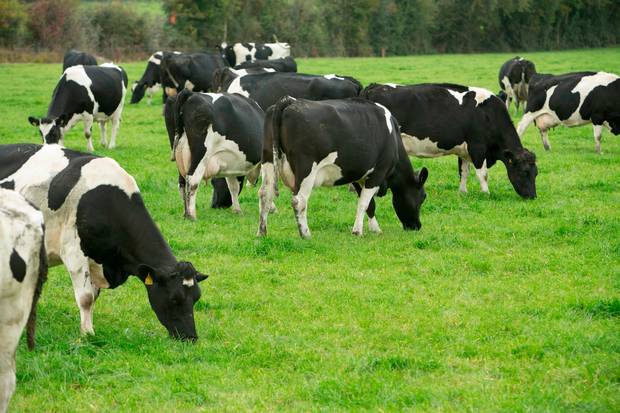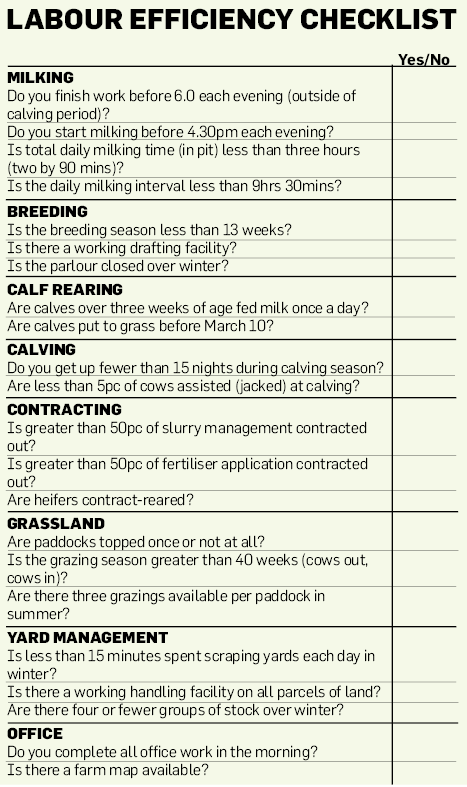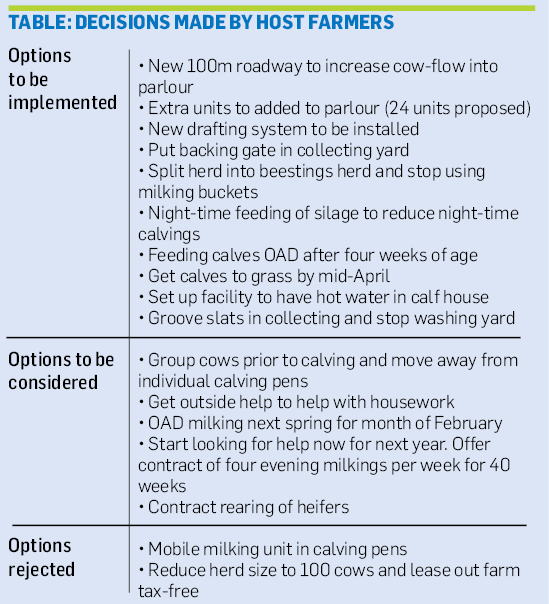Joe Kelleher is a Teagasc advisor based in Newcastle West, Co Limerick – December 26 2017 – FarmLand – The Irish Independent

Teagasc dairy advisors were recently given in-service training on addressing the huge issue of labour on dairy farms and looking at what could be done to rectify the issue for 2018.
While there are many challenges regarding labour, there are also some solutions.
As part of the training, we visited a young farming couple, who had three children aged between five and 10, and were milking 140 cows, having increased from 70 in 2010.
One of the opening statements by our host farmer was how he felt “the fun was gone out of farming” and he wished to set up his farming system in such a way that would enable him to spend more time with his family.
They had been on a four-day holiday in 2017 and had no holiday in 2016, so something had to change.
The facilities on the farm were excellent, with 170 cubicles, eight calving pens, eight calf pens, a 12-unit milking parlour and collecting yard with backing gate all under the one roof.
Paddocks and roadways were in good order and the land, while sloping, was extremely free-draining.
Despite all this, the husband was working 18-hour days in the spring and 12-hour days for the remainder of the year, with his wife also spending the majority of her day on the farm, while also trying to juggle getting kids ready for school, homework, housework, hurling training and the 100 other activities that have to be undertaken with young families.
The milking process (including going for the cows and washing up after milking) was taking up to seven hours per day.
They have 125 acres on the home farm with another 50-acre outside block, 30 minutes away by car.

Both husband and wife worked full-time on the farm, with labour only brought in for about 10 days in the year. The majority of machinery work was contracted out, and the level of machinery on the farm was low.
Pat Clarke, Teagasc dairy specialist, outlined how labour should be tackled in the following order:
1. Labour-efficient practices
2. Work organisation
3. Employing labour
As farmers, we have an instinct to jump straight to point three and lament the fact that there is shortage of farm labour in the country at present. However, we should initially focus on the first two areas.

As a group, we were tasked with coming up with suggestions to this young farming couple that related to all three areas above, and the husband and wife team had to then indicate which options they would implement, which they would consider and which options they would reject.
The table below gives the outcomes of this process:
As you can see most of the suggestions focused on labour-efficient practices and work organisation. Many of the suggestions may only knock 20 or 30 minutes off the working day, but they add up to over 2,000 hours’ work saved in the year, which is the equivalent of a full-time labour unit.
Some of the options will cost nothing to implement and others could run into big money, but what value would you put on time spent with family?
The extra units on the milking parlour, for example, worked out at €20-30 per hour of labour saved.
The host farmer informed us that due to them being located in a densely populated dairy area, relief labour was extremely hard to get, but also conceded that he never rang the FRS service to check availability.
However, it was an area they were actively looking at.
One of the suggestions was that the employee needed to have a guaranteed amount of weekly work to be tempted to come work for you, and that by offering a year’s work for so many hours a week, you had a better chance of finding an employee, rather than going on a “we’ll see how it goes” basis.
This way the employee knows exactly what they are going to be doing and you know what you are getting.
Tom O’Dwyer, Teagasc head of dairy knowledge transfer, commented that for many farmers, to implement what we had outlined required a behavioural change on the way they went about their daily tasks and that it involved the “cue, task, reward” system.
The example put forward was if the farmer had an alarm set on his phone at 3.30pm every day, this was his cue to go for the cows, the task was the milking process and the reward was the extra time available to spend with family or pursuing hobbies.
This farming couple were encouraged to take a week off at Halloween and stand back and look at what they are doing and figure out what their ideal farming life looked like and then implement the necessary changes.
Is it time we all analysed our labour practices and work organisation? There are three months now to make changes to your routines to be ready for 2018.
Perhaps we can bring “the fun back into farming” if we do.
